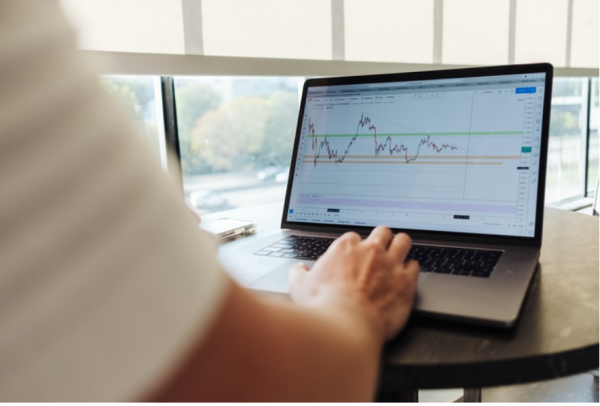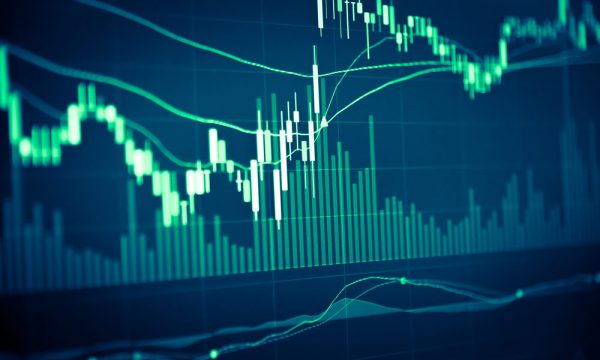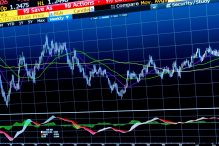Contents:

Often, it has directions to back all units of https://forexdelta.net/ currency with foreign currency. After a short couple of years with a semi-floated currency, China decided during the global financial crisis of 2008 to revert back to a fixed exchange rate regime. The decision helped the Chinese economy to emerge two years later relatively unscathed. Meanwhile, other global industrialized economies that didn't have such a policy turned lower before rebounding.

Several nations, most notably China, have maintained a fixed exchange rate in recent years. They have rigorous capital restrictions, and it is illegal to trade their currency at any rate other than the pegged rate. With strict government controls over money conversion transactions, nations like China have found this approach highly effective. However, it may be challenging to implement and can even lead to black market operations.
Digital currencies, a major source of innovation: FIS - Retail Banker International
Digital currencies, a major source of innovation: FIS.
Posted: Mon, 27 Feb 2023 12:17:36 GMT [source]
Still, it is financial crises that threaten the collapse or removal of currency pegs. For instance, there was a time when the British government pegged its currency to the German Deutschemark. The central bank of Germany, Bundesbank, increased its interest rates to curb domestic inflation. This was not the ideal situation for the British economy, which suffered greatly as a result of concerns in other jurisdictions. Nevertheless, currency pegs remain a handy financial tool that promotes fiscal responsibility, stability and transparency. A dollar peg is when a country maintains its currency's value at a fixed exchange rate to the U.S. dollar.
Simply put, the https://traderoom.info/ "currency peg" describes when one currency's value is fixed to another's. And in Argentina, a peg was actually established to combat inflation that was so rampant that supermarkets were forced to read out prices over a loudspeaker to keep up. By pegging its currency, a country can gain comparative trading advantages while protecting its own economic interests. It needs to invest its dollar stockpile into something safe that also gives a return, and there's nothing safer than Treasurys.
What is a pegged cryptocurrency?
Asked whether GCC member states would de-peg their currencies on their own, Saudi Arabia’s Finance Minister Ibrahim Al Assaf told reporters that if the countries did it they would do it as a block. However, conflicting information from many GCC leaders is fanning the flames of speculation. Recent announcements from the United Arab Emirates and Qatar have indicated their wish to abandon the dollar. Yet statements made during the leaders’ summit have leaned towards keeping the currency pegged until the group’s monetary union is formed in 2010.

We're also a community of traders that support each other on our daily trading journey. Currency pegging is usually done by countries that wish to stabilize their global trade operations. As a result, they have large amounts of dollars in theirsovereign wealth funds. These petrodollars are often invested in U.S. businesses to earn a greater return. For example, Abu Dhabi invested petrodollars in Citigroup to prevent its bankruptcy in 2008. Keeping the currencies equal is difficult since the dollar's value changes constantly.
history of the gold standard
Some examples of stablecoins include Tether and TrueUSD which are pegged to the US dollar and bitCNY, which is pegged to the Chinese yuan . Creating a fixed exchange rate can have some benefits, but it also brings risk to the country that's pegging its currency to another's. Overall, it can be difficult to maintain the foreign exchange reserves necessary to keep the peg in place. If the currency is pegged too high or too low, there also can be adverse effects in trade and inflationary pressures.

When a country sets up a currency board, there is a transition period between the domestic currency and the foreign currency or the currency-board notes. Prices, including wages, are changed from the domestic currency to the new currency according to the ratio established between the 2. The central bank ceases to be an institution conducting monetary policy — its assets and liabilities are transferred either to the government or a commercial bank.
https://forexhero.info/ with currency boards will also set up lines of credit with banks in the reserve country, so that they can borrow the reserve currency when needed. Argentina, for instance, had letters of credit with U.S. banks so that dollars could be borrowed, if necessary. Because an economy suffers greatly without a domestic currency, a profligate government is eventually forced to try to reestablish credibility in the domestic currency.
It helps the importers to do business effectively since the currency exchange is pegged at a fixed rate. Financial MarketsThe term "financial market" refers to the marketplace where activities such as the creation and trading of various financial assets such as bonds, stocks, commodities, currencies, and derivatives take place. It provides a platform for sellers and buyers to interact and trade at a price determined by market forces. It further helps in the easy purchase of critical commodities such as food products and oils as the domestic country has pegged itself to the most popular foreign currency. While higher import prices have contributed to increases in inflation in recent years, varying inflation rates between the two groups of GCC economies largely reflect differences in the pace of increase in public spending and investment.
FIX Line: Trade-off between symmetry of shocks and integration
The sellers, U.S. farmers, and Middle East oil producers, see a decrease in demand, and business loss and trade tensions may escalate among the countries. Against this background, currency traders bet on a revaluation of GCC currencies. Although several central banks decreased interest rates in November to conform to the US Federal Reserve moves, there was a widespread expectation that the GCC summit would pave the way for devaluation and a quick profit for the speculators. Instead, as noted above, it produced no statement at all on the issue. Clearly, as long as the pegs stay in place, speculative movements will flare up from time to time, making it even more difficult for central banks to control liquidity and ultimately the rate of domestic inflation. Despite such calls for action, the December 3-4 Gulf Summit ended without any change in the dollar peg.
The U.S. dollar's status as the world's reserve currency makes many countries want to peg. One reason is that most financial transactions and international trade are made in U.S. dollars. Countries that are heavily reliant on their financial sector peg their currencies to the dollar. Examples of these trade-reliant countries are Hong Kong, Malaysia, and Singapore. Fixed Exchange RateA fixed exchange rate refers to an exchange rate regime where a country’s currency value will be tied with the value of another country’s currency or a major commodity. The central bank has to constantly monitor the demand and supply of foreign currency concerning its domestic currency.
- The last couple of years saw oil prices collapse from about $100 a barrel in June 2014 to around $40 to $50 a barrel in the second quarter of 2016.
- We also reference original research from other reputable publishers where appropriate.
- Any significant deviation in rates would lead to arbitrage by currency traders placing strain on the peg and possibly inviting destabilizing speculation, such as occurred in 1997 with the collapse of the Thai baht.
This is called sterilized intervention in the foreign exchange market. When the ECB starts running out of reserves, it may also devalue the euro in order to reduce the excess demand for dollars, i.e., narrow the gap between the equilibrium and fixed rates. A currency peg is a nation's governmental policy whereby its exchange rate with another country is fixed. Most nations peg their currencies to promote trade and foreign investment and encourage stability.
In other instances, developing nations or countries with volatile economies, usually peg their currencies to the US dollar to guard against potential inflation. The most popular foreign currency to which domestic countries peg the exchange rate is dollars. The central bank of the domestic country may maintain a peg in such a fashion that it may buy foreign currency at one rate and sell foreign currency at another currency. The central bank maintains foreign reserves, which helps them easily buy or sell reserves at a fixed rate of exchange.
While these flows have become a major worry of central bankers all over the Gulf, they are most pronounced in Qatar and the UAE. The problem came to a head in late 2007, when GCC governments did not immediately follow US interest rate decreases in September. Speculators saw this as a sign of an impending revaluation of their currencies. As Qatar continues to see a steady rise in inflation, there will be increasing pressure to de-peg the currency.
The necessity of similar monetary policies in the GCC to those in the United States under the peg stems from the fact that to maintain a pegged exchange rate GCC central banks are forced to follow the interest rate moves of the US Federal Reserve. Any significant deviation in rates would lead to arbitrage by currency traders placing strain on the peg and possibly inviting destabilizing speculation, such as occurred in 1997 with the collapse of the Thai baht. Prices of most goods and services in the dollarized country will become equalized with those of the reserve country, since arbitrage will eliminate major price differences between the 2 countries. Hence, an officially dollarized country becomes part of the reserve currency zone, much as the European nations became part of the Euro zone when they adopted the euro.
Consequently, the money supply contracts, which will initially cause unemployment. A report published byS&P Globalconcludes that stablecoins are more volatile than pegged fiat currencies. The report published today, ‘A Deep Dive Into Crypto Valuation‘, is timely given that this is one of crypto’s more volatile weeks of late, following theFTX exchange‘s need for a bailout. The paper mainly explores volatility and compares digital assets such as Bitcoin to other cryptocurrencies, large cap stocks and gold.
The currency board needs to ensure the maintenance of adequate reserves of the anchor currency. Under the gold standard, each country's money supply consisted of either gold or paper currency backed by gold. Money supply would hence fall in the deficit nation and rise in the surplus nation. Consequently, internal prices would fall in the deficit nation and rise in the surplus nation, making the exports of the deficit nation more competitive than those of the surplus nations. The deficit nation's exports would be encouraged and the imports would be discouraged till the deficit in the balance of payments was eliminated.
Bitcoin adoption growing as Lightning Network hits all-time high - Yahoo News
Bitcoin adoption growing as Lightning Network hits all-time high.
Posted: Tue, 28 Feb 2023 12:00:49 GMT [source]
"Lower export takings have limited the country's ability to earn the foreign currency needed to repay dollar-denominated debts," reported the BBC. And "a decline in world prices for farm product, and the global economic slowdown of recent months, only worsened Argentina's problems." Central banks need to hold a lot of foreign currency to keep the peg going.
Hundreds of disgruntled employees who were either laid off or about to lose their jobs urged the central bank to take responsibility for their plight. It helps countries with low costs of production keep exports cheap.Basically, when times are good, the peg keeps the currency artificially cheap. Bangladesh, Czech Republic, and Thailand have pegged their currencies to a basket of several select currencies.

After pegging a currency, the central bank then monitors its value relative to the value of the US dollar. If the currency rises above or falls below the peg, the central bank would use its monetary tools, such as buying or selling treasuries in the secondary market, to restore the peg. Monetary PolicyMonetary policy refers to the steps taken by a country’s central bank to control the money supply for economic stability. For example, policymakers manipulate money circulation for increasing employment, GDP, price stability by using tools such as interest rates, reserves, bonds, etc. It is defined as the exchange rate fixed between two countries to supplement their trade. In such a system, the central bank aligns its domestic currency with its other currency.






